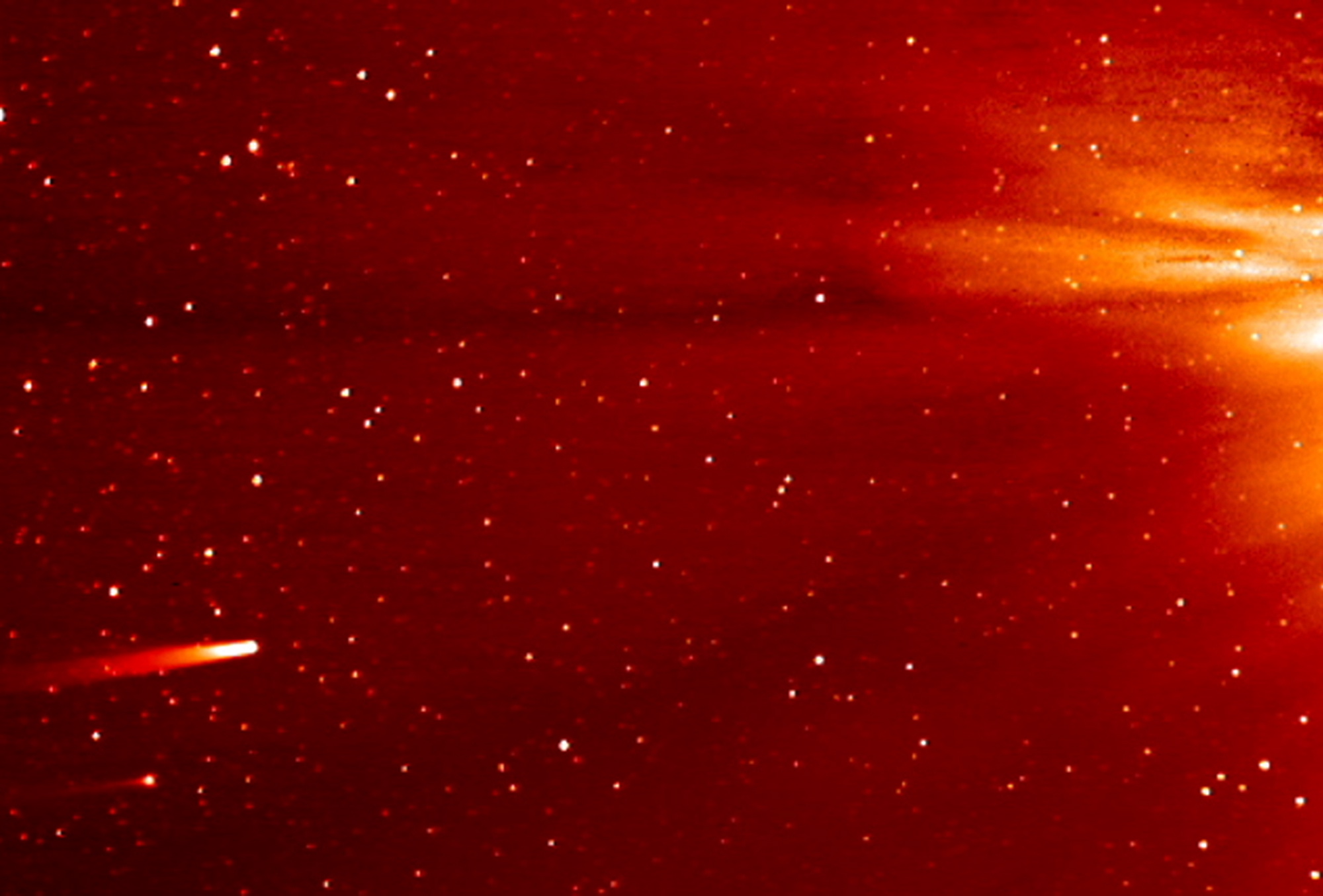LOS ANGELES — Has Comet ISON survived its suicidal flyby of the sun? Scientists expected the dirty snowball to break apart as it flew within 730,000 miles of the sun on Thanksgiving, but NASA reported Friday that its nucleus may have survived.
“As ISON appeared to dim and fizzle in several observatories and later could not be seen at all by NASA’s Solar Dynamics Observatory or by ground based solar observatories, many scientists believed it had disintegrated completely,” read a NASA statement.
“However, a streak of bright material streaming away from the sun appeared in the European Space Agency and NASA’s Solar and Heliospheric Observatory later in the evening.
The question remains whether it is merely debris from the comet, or if some portion of the comet’s nucleus survived, but late-night analysis from scientists with NASA’s Comet ISON Observing Campaign suggest that there is at least a small nucleus intact,” NASA said.



